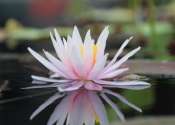Great potential in regulating plant greenhouse gas emissions
You cannot see them with the naked eye, but most plants emit volatile gases—isoprenoids—into the atmosphere when they breathe and grow. Some plants emit close to nothing; others emit kilograms annually.









